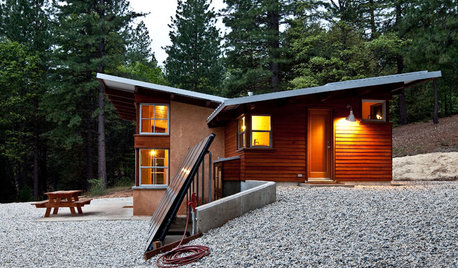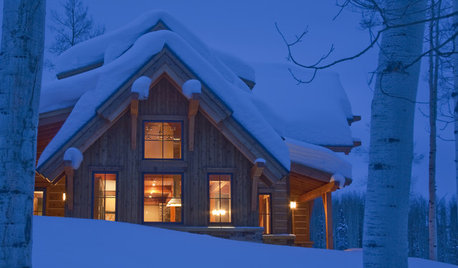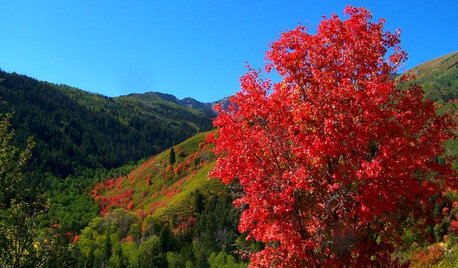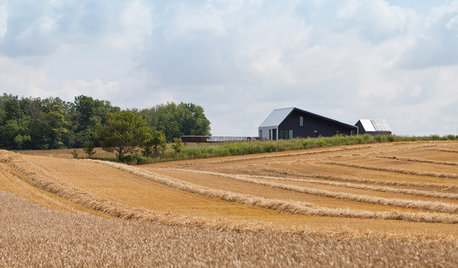Heat Gun With Temperature Over 2000 Fahrenheit / 1100 Celsius?
westes Zone 9b California SF Bay
last year
last modified: last year
Featured Answer
Comments (7)
Related Discussions
Will Global Warming Affect Gardening?
Comments (94)ok, now we're getting into alot of specifics here. The North Pole has not always been covered in ice, even in recent history. Also, where did the name Greenland come from? or Vinland, for that matter ? These are very northern areas, yet in (relatively) modern times appear to have been quite a bit warmer. Again, I want to reiterate that I am absolutely NOT for pollution, but I just don't think that we are causing significant climate change. Another sticky point: there is no way to measure "average" temperature. In fact, there really is no such thing. I have a friend who is a biochemist who has a company that makes viral cultures in a "large" reactor. Large meaning about 50 gallons. He tells me that there is absolutely no way for him to measure the temperature of the solution to an accuracy of better than 2 degrees fahrenheit. HE'S A SCIENTIST. And we're supposed to believe that we can measure the "average" temperature of the earth, a much more chaotic system, to accuracies of 0.2 degrees? This is ridiculous in the extreme. My sincere hope is that this whole climate change fad is really a masterful way to convince people to switch to nuclear power instead of burning hydrocarbons for electricity generation. Perhaps that's all it is -- get the environmentalists to start backing nuclear power. And that would be a very good thing for the world. Wayne...See MoreIt doesn't make any difference
Comments (16)Andie - loose straw is indeed quite flamable; however, once packed into bales the flamability decreases dramatically. Houses built with straw bales are *extremely* safe because the stucco applied over the straw inhibits flames from reaching the straw, and if/when the flame is applied to the straw, it does not burn well due to the compression and lack of air within the bale. There have been many tests, both governmental and private, which support the safety of straw bale construction for housing. I haven't read as much about cob, but I suspect that during the construction process there would be a potential for flamability equivalent or lower than the potential for flamability at cabinetry workshop, and that the finished cob wall would be not as impervious as stucco-over-strawbale, but considerably better than standard 'stick' construction. Mind, this is in regards to walls - if a burning log rolls out of a fireplace, it will likely set fire to flooring and carpeting, which is an entirely different issue for the insurance companies. I've been told that owners of SB houses usually find that fire insurance is suitable only for the contents of the building, not for the building itself, because the building is generally considered to be as fireproof as concrete. "The ASTM E-119 fire resistance test for plastered straw-bale wall assemblies in 1993 passed for a 2 hour fire-wall assembly. In this test a gas flame blows on one side of the wall at approximately 2000 degree Fahrenheit (1100 degrees Celsius) while the temperature of the other side of the wall is continuously measured. The results of this test had no burn-through and a maximum temperature rise of 60 degrees Fahrenheit (33.3 degrees Celsius)." Retrieved from "http://en.wikibooks.org/wiki/Straw_Bale_Construction/Characteristics/Resistance_to_fire" because I can't say it better....See MoreIs anyone growing David Austin roses in the Tropics?
Comments (52)I'm NOT in a tropical climate -- far, far drier. But what Nik said: nikthegreek(9b/10a E of Athens, Greece) What the roses may find stressful as plants is not the heat or humidity but the lack of winter coolness That rang true for me. While not tropical, here in coastal Southern California, we also have No Winter Chill. In that situation, Austin roses that were perfectly well-behaved elsewhere morphed here into Jolly Green Giants ... growing 12- 14-ft. tall, and blooming only at the very top. If we cut them down, they responded by hunkering down and growing back to 12-ft., to produce one large bloom or cluster. After a few seasons of that, we had to acknowledge the advice we had received that these were not the ideal roses for our conditions. We still grow a few Austins . . . Golden Celebration is great here (but would blackspot for you). Prospero is one of my all-time favorites, as is Belle Story, and my DH loves Cymbaline....See MoreGlobal Warming....misc thread
Comments (25)Sheese, will we ever be able to figure out what's going on??? Scientists Clueless over Sun's Effect on Earth By Robert Roy Britt LiveScience Senior Writer posted: 05 May 2005 02:01 pm ET While researchers argue whether Earth is getting warmer and if humans are contributing, a heated debate over the global effect of sunlight boiled to the surface today. And in this debate there is little data to go on. A confusing array of new and recent studies reveals that scientists know very little about how much sunlight is absorbed by Earth versus how much the planet reflects, how all this alters temperatures, and why any of it changes from one decade to the next. Determining Earth's reflectance is crucial to understanding climate change, scientists agree. Brighter outlook? Reports in the late 1980s found the amount of sunlight reaching the planet's surface had declined by 4 to 6 percent since 1960. Suddenly, around 1990, that appears to have reversed. "When we looked at the more recent data, lo and behold, the trend went the other way," said Charles Long, senior scientist at the Department of Energy's Pacific Northwest National Laboratory. Long participated in one of two studies that uncovered this recent trend using satellite data and ground-based monitoring. Both studies are detailed in the May 6 issue of the journal Science. Thing is, nobody knows what caused the apparent shift. Could be changes in cloud cover, they say, or maybe reduced effects of volcanic activity, or a reduction in pollutants. This lack of understanding runs deeper. A third study in the journal this week, tackling a related aspect of all this, finds that Earth has reflected more sunlight back into space from 2000 to 2004 than in years prior. However, a similar investigation last year found just the opposite. A lack of data suggests it's impossible to know which study is right. The bottom line, according to a group of experts not involved in any of these studies: Scientists don't know much about how sunlight interacts with our planet, and until they understand it, they can't accurately predict any possible effects of human activity on climate change. Reflecting on the problem The percentage of sunlight reflected by back into space by Earth is called albedo. The planet's albedo, around 30 percent, is governed by cloud cover and the quantity of atmospheric particles called aerosols. Amazingly, one of the best techniques for measuring Earth's albedo is to watch the Moon, which acts like a giant mirror. Sunlight that reflects of Earth in turn reflects off the Moon and can be measured from here. The phenomenon, called earthshine, was first noted by Leonardo da Vinci. Albedo is a crucial factor in any climate change equation. But it is one of Earth's least-understood properties, says Robert Charlson, a University of Washington atmospheric scientist. "If we don't understand the albedo-related effects," Charlson said today, "then we can't understand the effects of greenhouse gases." Charlson's co-authors in the analysis paper are Francisco Valero at the Scripps Institution of Oceanography and John Seinfeld at the California Institute of Technology. Plans and missions designed to study the effects of clouds and aerosols have been delayed or cancelled, Charlson and his colleagues write. To properly study albedo, scientists want to put a craft about 1 million miles out in space at a point were it would orbit the Sun while constantly monitoring Earth. The satellite, called Deep Space Climate Observatory, was once scheduled for launch from a space shuttle in 2000 but has never gotten off the ground. Two other Earth-orbiting satellites that would study the albedo have been built but don't have launch dates. And recent budget shifts at NASA and other agencies have meant some data that's available is not being analyzed, Charlson and his colleagues contend. 'Spurious argument' While some scientists contend the global climate may not be warming or that there is no clear human contribution, most leading experts agree change is underway. Grasping the situation is crucial, because if the climate warms as many expect, seas could rise enough to swamp many coastal communities by the end of this century. Charlson says scientists understand to within 10 percent the impact of human activity on the production of greenhouse gases, things like carbon dioxide and methane that act like blanket to trap heat and, in theory, contribute to global warming. Yet their grasp of the human impact on albedo could be off by as much as 100 percent, he fears. One theory is that if humans pump out more aerosols, the small particles will work to reflect sunlight and offset global warming. Charlson calls that "a spurious argument, a red herring." Greenhouse gases are at work trapping heat 24 hours a day, he notes, while sunlight reflection is only at work on the day side of the planet. Further, he said, greenhouse gases can stay in the atmosphere for centuries, while aerosols last only a week or so. "There is no simplistic balance between these two effects," Charlson said. "It isn't heating versus cooling. It's scientific understanding versus not understanding."...See Morewestes Zone 9b California SF Bay
last yearwestes Zone 9b California SF Bay
last yearwestes Zone 9b California SF Bay
last yearlast modified: last year
Related Stories

FLOORSIs Radiant Heating or Cooling Right for You?
Questions to ask before you go for one of these temperature systems in your floors or walls (yes, walls)
Full Story
LIGHTINGWhat to Know About Switching to LED Lightbulbs
If you’ve been thinking about changing over to LEDs but aren't sure how to do it and which to buy, this story is for you
Full Story
GREAT HOME PROJECTSHow to Add a Solar Water Heater
Lower energy bills without a major renovation by putting the sun to work heating your home’s water
Full Story
HOUSEPLANTSHow to Grow Orchids Indoors
Orchids are the exotic aristocrats of the flower world and can make themselves comfortable in almost any home
Full Story
LIFEIs Cabin Fever Real? Share Your Story
Are snow piles across the U.S. leading to masses of irritability and boredom? We want to hear your experience
Full Story
HOUSEKEEPINGDishwasher vs. Hand-Washing Debate Finally Solved — Sort Of
Readers in 8 countries weigh in on whether an appliance saves time, water and sanity or if washing by hand is the only saving grace
Full Story
LIFEHow Will We Live on the Moon? Just Ask ‘The Martian’ Author
In his new book, ‘Artemis,’ Andy Weir geeks out on how homes and cities could one day be built on the lunar surface
Full Story
GARDENING GUIDESBigtooth Maple, the West’s Native Sugar Maple
Plant Acer grandidentatum for cool shade, brilliant autumn colors and songbird habitat
Full Story
GREEN BUILDINGOff the Grid: Ready to Pull the Plug on City Power?
What to consider if you want to stop relying on public utilities — or just have a more energy-efficient home
Full Story
KITCHEN DESIGN11 Enduring Kitchen Ideas From the Industry’s Biggest Event
We visited the Kitchen and Bath Industry Show and found that many familiar kitchen features appear to be here to stay
Full StorySponsored
Central Ohio's Trusted Home Remodeler Specializing in Kitchens & Baths




HU-811797333